DESIGN BRIEF
"Sun"glasses are a wearable device (glasses) which displays a user's openness to interaction with a simple gesture, the flexing of a finger. When a user does not want to interact with others, balling one’s hand into a fist will cause the glasses to display some signal which shows a user’s disinterestedness in conversation. In the opposite case, opening up a user's fist would show the opposite signal. “Sun” glasses use weather emoji to convey a user's mood signal (e.g., cloudy, rainy, sunny).
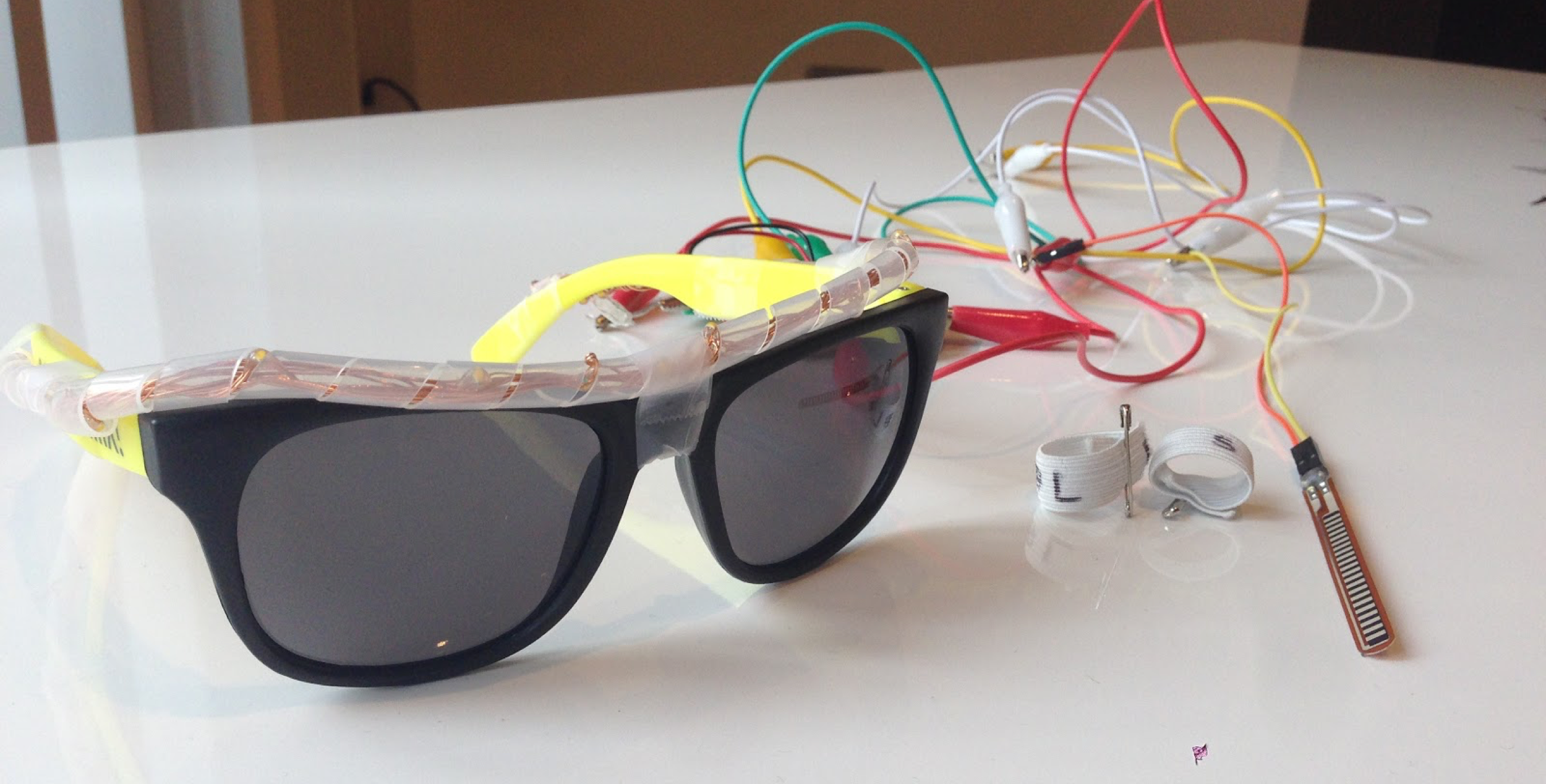
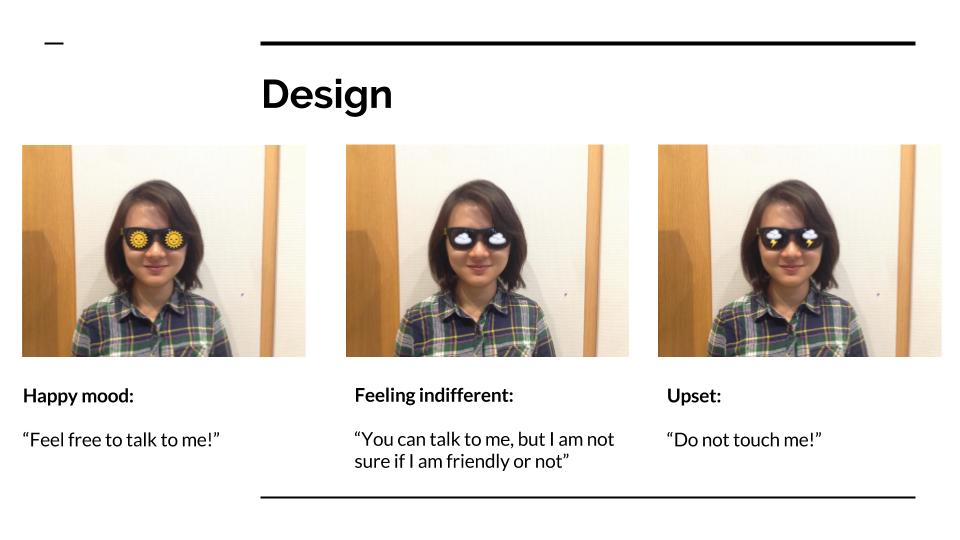
DESIGN PROCESS
01. Exploring the problems
Participants in a critical making workshop wrote down body related problems and developed ideas for how these body related problems could be solved with wearable technology. Then participants created groups who had written down the same problem. Our group consisted of four members who wanted to address ‘emotion and interaction with others’ using wearable technology. We defined our project’s aim as follows: To develop technology that would enable individuals to signal their openness to or disinterestedness in interaction.
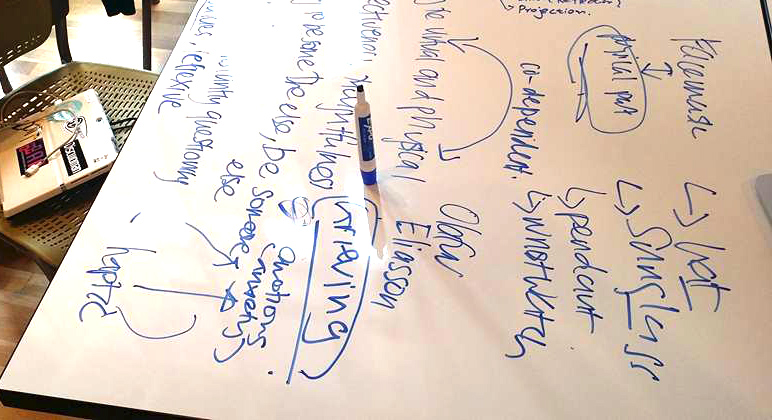
02. Developing Concept
Brainstorming
We brainstormed about which body part we would use as an input signal and which wearable elements (e.g., hats, glasses, ring) or signal (e.g., light, heat) would work best for the solution. We decided to use glasses as a wearable tool because when people want to interact with someone, it is natural to look in his or her eyes. We also used a flexed finger (or forming a fist) as an input signal because when people are nervous, or feeling bad, they are likely to make a fist, signaling disinterestedness in engaging with others.
User Scenario
Meanwhile, we developed a solution based on a user scenario. The first scenario we imagined was two friends are in the same room and one would like to have a conversation yet uncertain if the others would like to engage interaction. The second scenario we imagined was an unwanted approach from a guy in public environment like cafe.
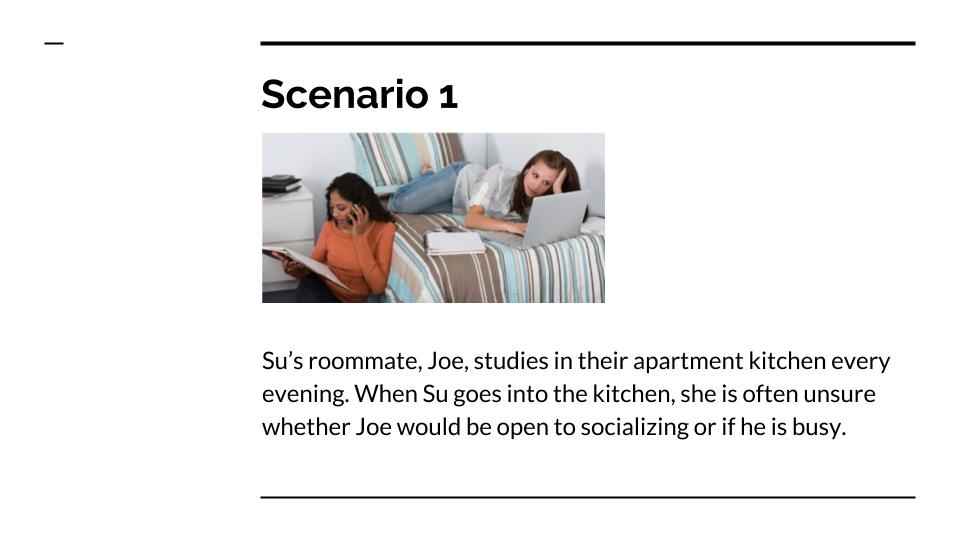
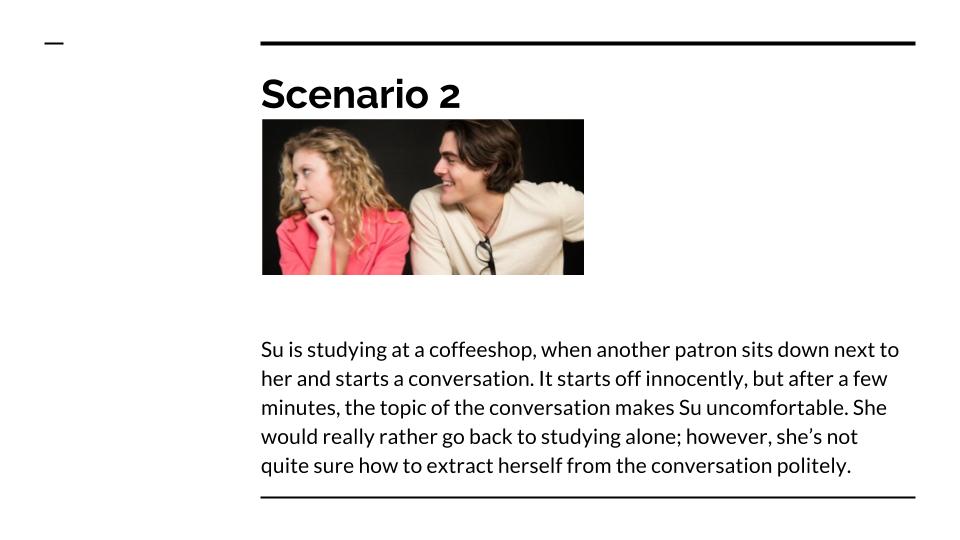
Storyboard
We discussed about how “Sun” glasses can effectively display people’s mood. Weather emoji was the answer for our team because emoji intuitively delivers its meaning to other people without using the words. Using emoji helps to overcome language barrier for people who comes from different cultural backgrounds. The name of our product, “Sun” glasses came from this weather emoji. Based on our discussion, we created a storyboard to show how the “Sun” glasses will display a user’s openness to interaction.
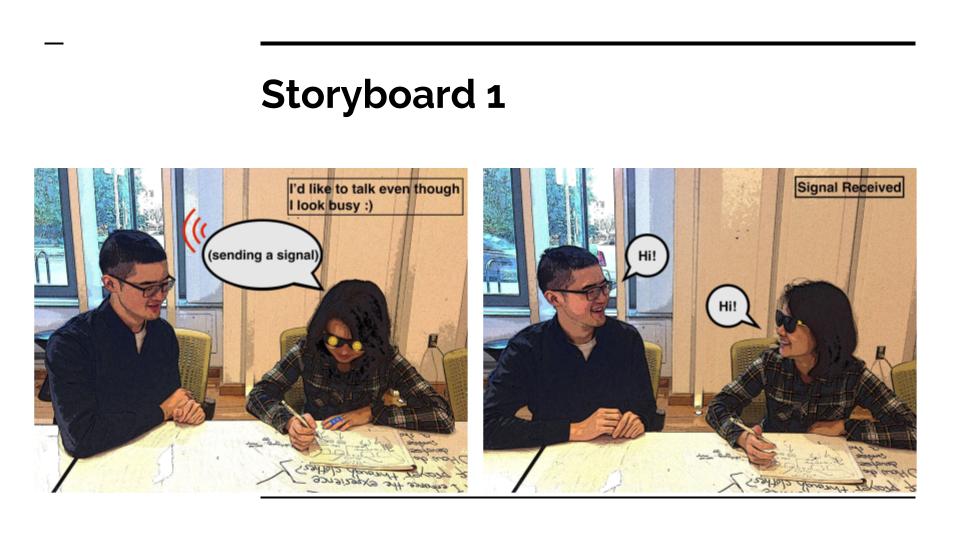
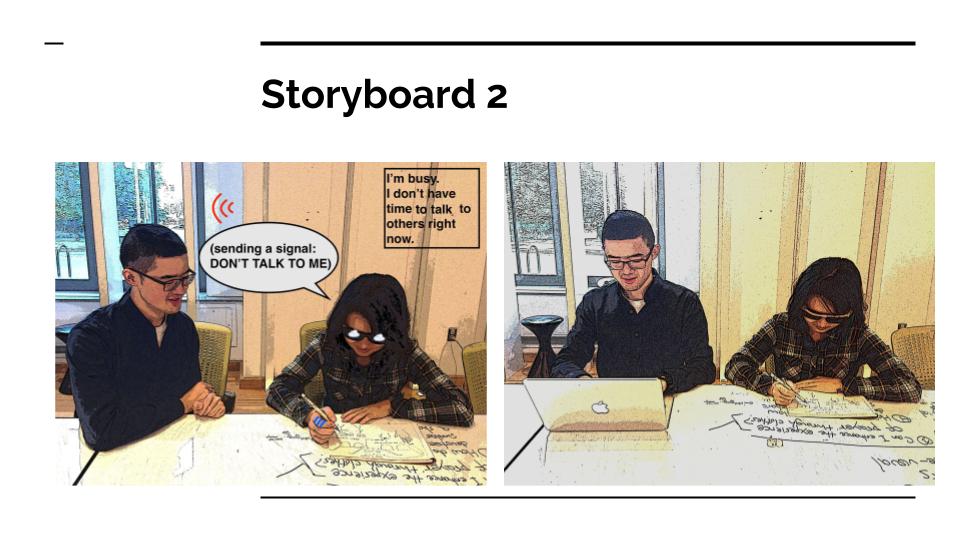
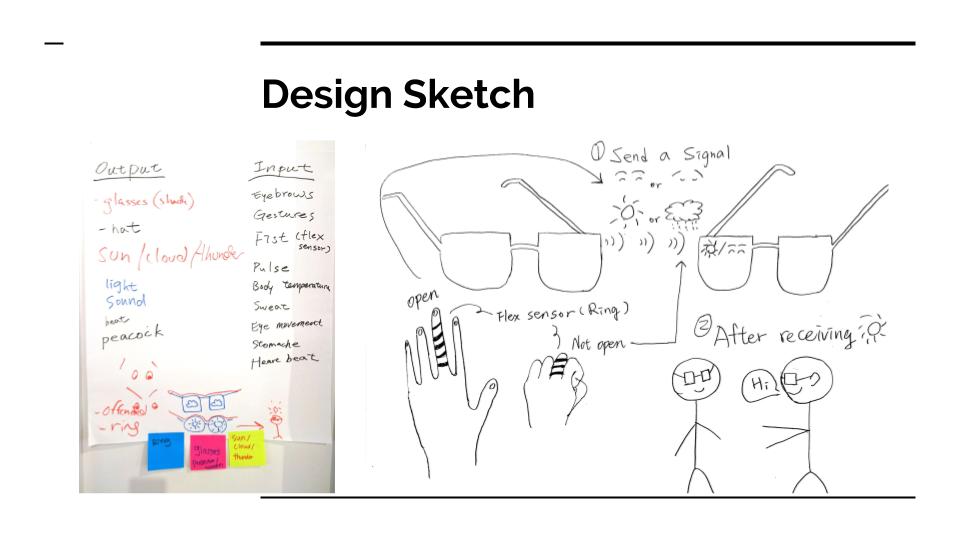
03. Prototyping
Next, with flexing sensor and Arduino, we built a prototype of our idea, “Sun” glasses. Although our idea was to show weather emoji to convey a user’s mood signal, we replaced this output signal to flashing light due to resource and technical constraints. Then we made a showcase of our prototype to other participants and panels in the workshop.
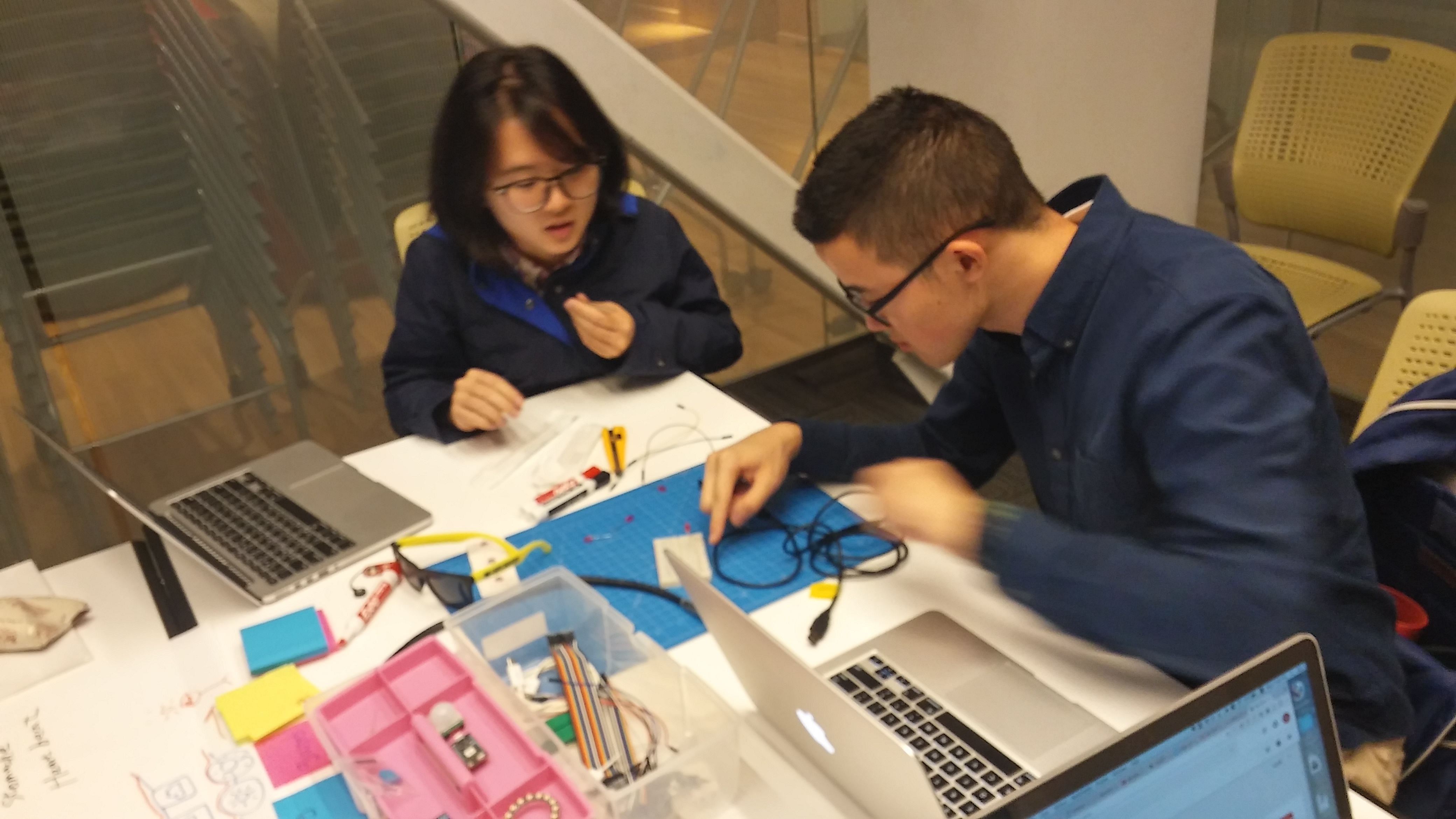
IMPACT
“Sun” glasses will help users to enjoy social interactions because they will explicitly give a clue of openness to others based on the user’s mood. Individuals will feel more comfortable in terms of new cultural contexts and they can clearly indicate whether they do or do not want to socially interact. People, especially for women, will feel safer in public spaces. (e.g., scenario 2) Other individuals will have a better idea if and when he/she is open to interaction.
CRITICAL QUESITONS FOR FUTURE DESIGN
Due to limited time of ideation, there are some critical design questions left, which we could not address into our design. In the future, following questions would be needed to consider:
- How to design to indicate openness, as glasses cover the eyes (in some ways, is it easier to design to show lack of openness?)
- How to design for improved accessibility
- Safety/Vulnerability -- Clarity of display/symbols
- How to design for more subtle input to the system; is automation possible?
- Feedback for the wearer (can they determine whether they are displaying the output they intend?)

